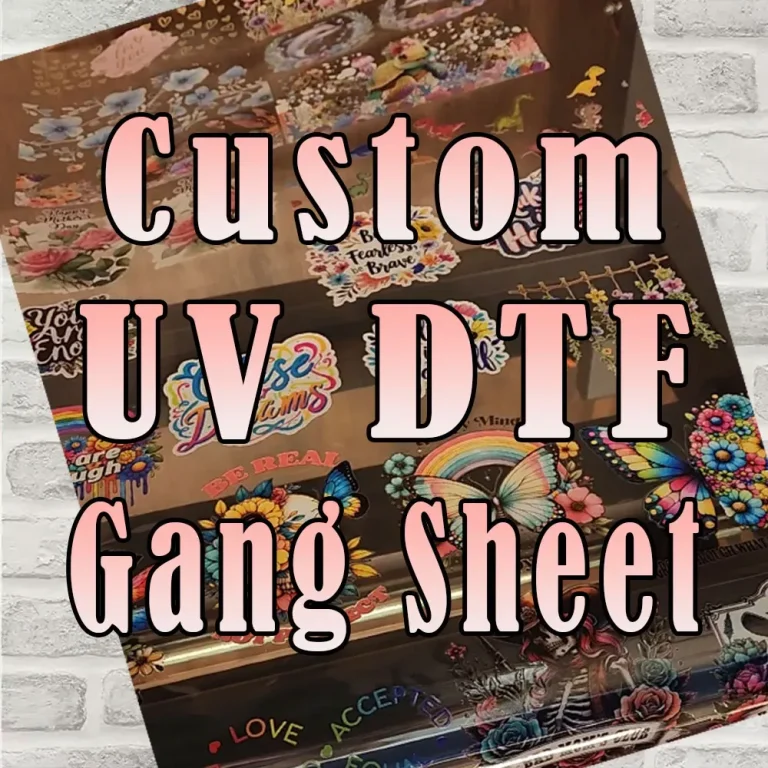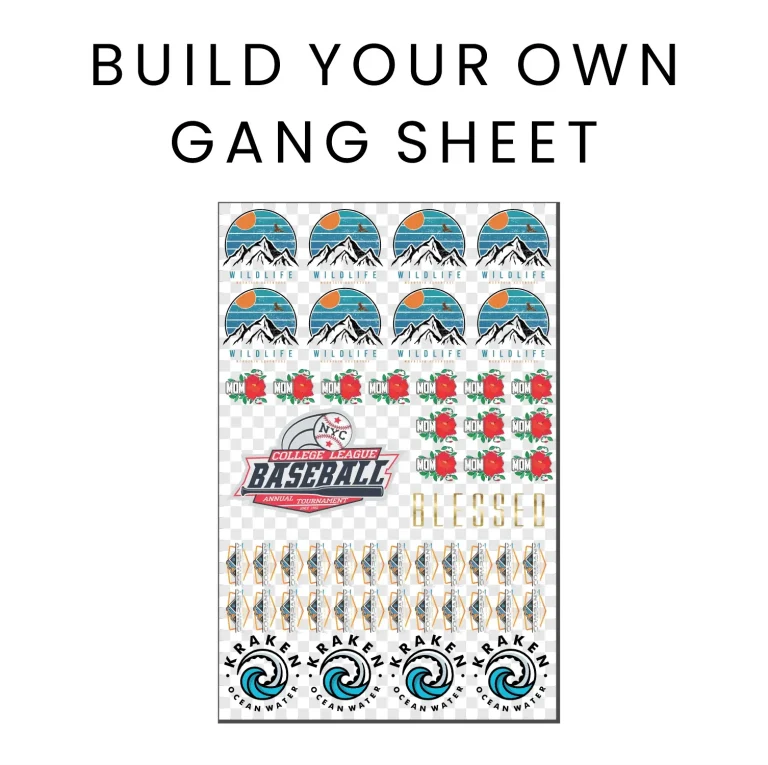Advantages of DTF Printing Over Traditional Methods
The Advantages of DTF printing are transforming the landscape of the printing industry, offering remarkable benefits for both businesses and individual creators alike. Direct to Film (DTF) technology excels by providing exceptional quality and detail that surpasses traditional printing methods, such as screen printing and Direct to Garment (DTG) printing. With its ability to produce vibrant colors and intricate designs, DTF printing has become the go-to solution for custom apparel printing, ensuring that every piece stands out. Moreover, its versatility across different fabrics makes DTF a superior choice for a wide range of applications. As we explore DTF printing benefits, highlighting its speed, cost-effectiveness, and user-friendly nature, it becomes clear that this innovation is not just a trend but a solid investment for the future.
In recent years, the rise of Direct to Film (DTF) technology has captured the attention of those interested in modern printing solutions. This innovative approach differs markedly from traditional techniques, such as screen printing and DTG, by offering an array of benefits suitable for diverse printing needs. Known for its vibrant color reproduction and the capability to print on various fabric types, DTF provides an enticing alternative for custom designs that demand high-quality execution. Understanding the subtleties between DTF and other printing methods is essential for businesses to leverage these advancements effectively. As we delve deeper into the world of DTF printing details, it becomes evident that this method is shaping the future of the custom apparel and promotional product markets.
Exploring the Quality and Detail of DTF Printing
DTF printing is distinguished by its ability to achieve remarkable quality and detail that often eclipses traditional printing methods. The process involves printing designs onto a specialized transfer film, which is then applied directly to the fabric, enabling vibrant colors and intricate details to shine through. This is particularly advantageous for custom apparel, where visual impact is critical. High-resolution images, fine lines, and subtle gradients are easily replicated, ensuring that every piece stands out and captures attention, making your designs pop like never before.
Moreover, the clarity and durability of DTF prints contribute significantly to their appeal. Unlike traditional methods that may fade or deteriorate over time, DTF prints exhibit a high level of resilience against wear and washing. This means that customers can enjoy their customized apparel longer, making DTF an attractive option for both consumers and businesses looking to maintain quality over time. The combination of vivid colors and lasting prints positions DTF as a leading choice for anyone serious about branding or creative expression.
Versatility of DTF Across Fabrics
One of the standout features of DTF printing is its versatility across a wide range of fabrics. This means that businesses and designers can apply their customized designs to assorted materials including cotton, polyester, and even blended fabrics, opening the door to countless creative possibilities. Unlike traditional methods like screen printing, which often have stringent requirements for material types, DTF allows for experimentation with various textures and compositions. This adaptability caters to diverse consumer preferences, enabling more tailored offerings in the custom apparel market.
Furthermore, this versatility enhances not only creativity but also functionality. For instance, a clothing line aiming for a sporty image can effortlessly print on technical fabrics used in athletic wear, while simultaneously producing designs on cozy cotton for casual wear. This capability positions DTF printing as a flexible option for brands wishing to expand their repertoire without the constraints imposed by traditional printing techniques, making it a practical choice in today’s diverse apparel landscape.
Rapid Turnaround Times with DTF
In the competitive world of custom printing, speed is crucial, and DTF printing shines in this regard. Unlike traditional methods that often require extensive setup processes, such as creating screens or pre-treating fabrics, DTF streamlines production time significantly. Orders can be fulfilled promptly, enabling businesses to cater to urgent requests or capitalize on recent trends swiftly, a crucial advantage during peak seasons when demand fluctuates.
This efficiency not only enhances customer satisfaction but also boosts operational productivity. Businesses can take on more orders without compromising quality or service times, allowing for greater flexibility in inventory management. As the demand for quick, high-quality prints grows, DTF stands out as a reliable solution, affirming its relevance in current market dynamics and ensuring that companies remain competitive in the custom apparel printing arena.
Simplicity and Streamlined Production Processes in DTF
DTF printing simplifies the production workflow significantly, eliminating several labor-intensive steps associated with traditional methods. For instance, there’s no need for pre-treating fabrics, which is a common requirement with Direct to Garment (DTG) printing. This reduction in preparation work not only saves time but also cuts down on labor costs, allowing businesses to allocate resources more effectively. Simplifying production processes is particularly beneficial for small businesses or startups trying to optimize operational efficiency while producing high-quality prints.
Additionally, the user-friendly nature of DTF printers further enhances this simplification. Operators require less specialized training compared to those working with more traditional methods. This accessibility empowers more small businesses to enter the market without investing in comprehensive training programs and allows existing businesses to leverage more versatile staffing solutions. Ultimately, this shift towards simplified processes signals a change in how the printing industry can operate, making it easier for more creators to bring their visions to life.
Cost-Effectiveness of DTF for Small Orders
In the realm of custom apparel, cost-effectiveness is a significant concern for many small businesses and independent artists. DTF printing emerges as a preferable option because it allows for small order quantities without incurring exorbitant setup fees associated with traditional screen printing methods. Traditionally, businesses could face financial limitations that precluded them from creating unique, small runs of their designs. However, DTF effectively democratizes the printing process, making high-quality custom designs accessible even for single-piece orders.
This aspect of DTF printing not only benefits the creators but also fosters a more diverse marketplace where unique, individualized products can flourish. Artists and entrepreneurs can experiment with their designs and respond to consumer demands without the financial burden of overproducing and risking unsold inventory. As a result, DTF contributes to a more vibrant creative economy, supporting those who wish to test their ideas with minimal financial risk.
The Eco-Friendly Aspects of DTF Printing
As global awareness of environmental issues increases, consumers and businesses alike are gravitating towards more sustainable practices. DTF printing stands out as an environmentally friendly alternative to traditional printing methods, as it typically requires less water and fewer harmful chemicals during production. This is particularly important for businesses aiming to align with corporate sustainability initiatives, making DTF printing a viable option for environmentally-conscious brands. Moreover, as eco-friendly inks and technologies continue to advance, DTF printing’s appeal only increases.
In addition to conserving resources, DTF printing aligns well with the growing demand for green production methods. As businesses strive to reduce their carbon footprints and adopt more sustainable practices, incorporating DTF into their operations allows for greater compliance with environmental standards and consumer expectations. By choosing DTF, companies can provide their customers with high-quality custom apparel that not only looks good but also contributes positively to the planet.
Frequently Asked Questions
What are the primary advantages of DTF printing compared to traditional printing methods?
The primary advantages of DTF printing include exceptional quality and detail, versatility across various fabrics, faster processing times, simplified production processes, cost-effectiveness for small orders, user-friendly technology, and environmentally friendly practices. These benefits make DTF an attractive choice over traditional printing methods like screen printing and DTG.
How do DTF printing benefits enhance the custom apparel printing experience?
DTF printing benefits significantly enhance the custom apparel printing experience by offering high color accuracy, vivid imagery, and the ability to print on diverse fabrics. This versatility allows for creative freedom in design while also catering to small order requests without sacrificing quality.
What should I know about DTF vs traditional printing for businesses?
When considering DTF vs traditional printing, businesses should note that DTF offers quicker turnaround times and does not require extensive setup or pre-treatment, making it a more efficient and cost-effective solution for order fulfillment and production.
What are the Direct to Film advantages for small businesses?
The Direct to Film advantages for small businesses include lower setup costs, the ability to fulfill single-piece orders, and reduced labor requirements. This allows entrepreneurs to create custom designs without the financial burden associated with traditional screen printing.
Can you explain the DTF printing details that contribute to its growing popularity?
DTF printing details contributing to its popularity include its ability to produce high-quality prints with superior color accuracy, the ease of use of DTF printers which require less technical expertise, and a simplified production process that appeals to both new and experienced creators.
How is DTF printing considered an environmentally friendly choice?
DTF printing is regarded as an environmentally friendly choice because it uses less water and fewer chemicals compared to traditional printing methods like screen printing. Its sustainable practices align with growing corporate responsibility and eco-conscious consumer demands.
| Advantage | Description |
|---|---|
| Quality and Detail | DTF offers superior color accuracy and intricate designs, making it ideal for custom apparel and promotional products. |
| Versatility Across Fabrics | Works on a broad range of materials, allowing for creativity that traditional methods can’t provide. |
| Faster Processing and Turnaround Times | Eliminates extensive setups, allowing businesses to meet tight deadlines efficiently. |
| Simplification of Production Processes | No pre-treatment of fabrics needed, reducing labor costs and streamlining workflows. |
| Cost-Effectiveness for Small Orders | Allows single-piece orders, making it feasible for small businesses and freelancers. |
| User-Friendly Technology | Designed for ease of use, requiring less technical expertise compared to traditional printing. |
| Environmentally Friendly Choice | Uses less water and fewer chemicals, aligning with sustainable practices. |
Summary
The advantages of DTF (Direct to Film) printing significantly outshine traditional printing methods. This innovative technology provides unmatched quality and detail, ensuring vibrant and precise prints that stand out. Its versatility across various materials opens up creative possibilities, while its fast processing times enhance efficiency for businesses. Moreover, DTF simplifies production processes, increases cost-effectiveness for small orders, and is user-friendly, making it accessible for all levels of expertise. Importantly, DTF is also environmentally conscious, appealing to consumers and businesses committed to sustainability. As the printing landscape evolves, DTF is positioned to lead the way in custom apparel and other applications, marking a transformative shift in how we approach printing.







